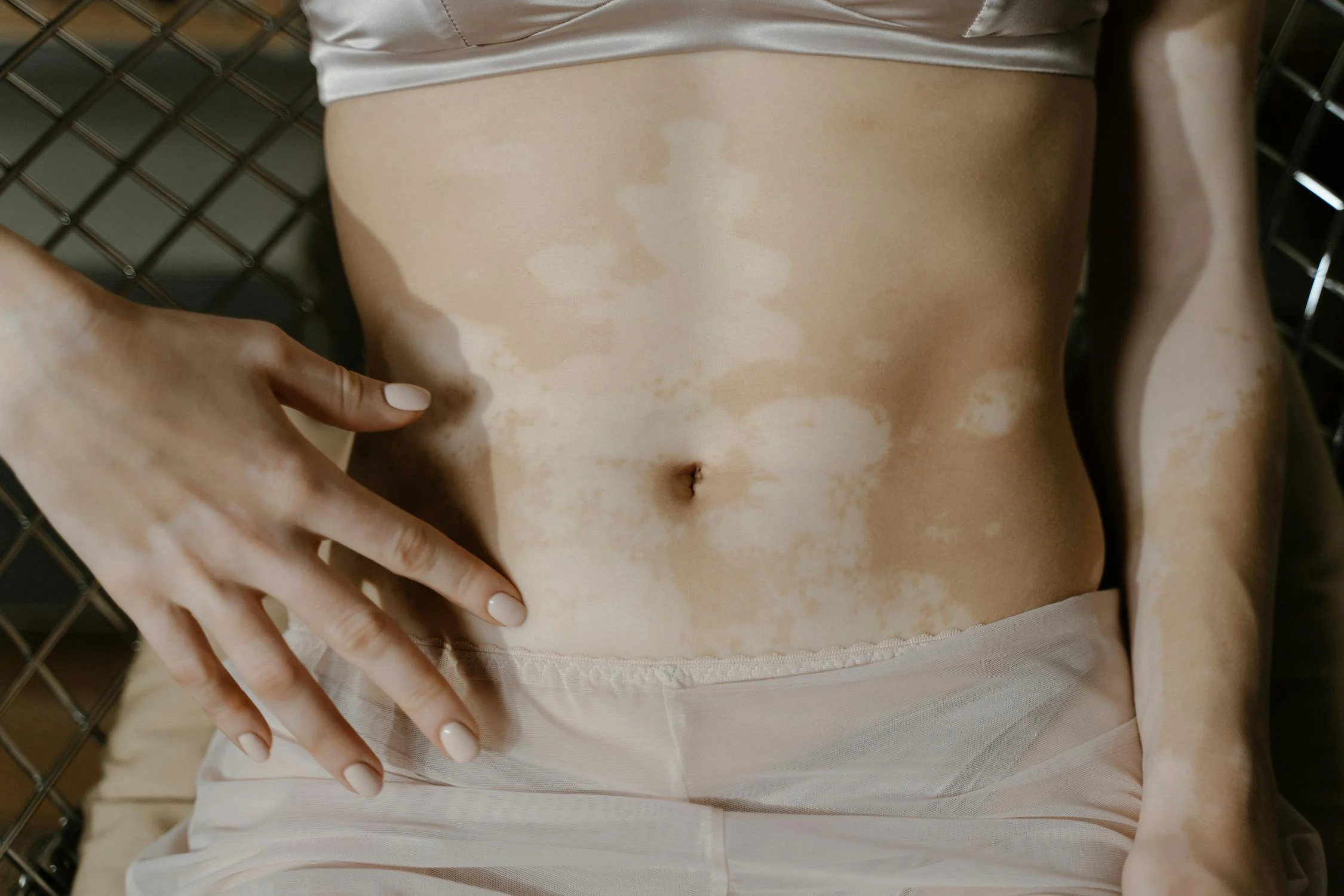Vitiligo is a condition that affects millions of people worldwide, but despite being relatively well-known, it still raises many questions about its causes and consequences. One of the most intriguing aspects of vitiligo is its connection with the immune system. After all, why does the body start attacking its own pigment-producing cells, leading to the characteristic patches of this condition? What could vitiligo be trying to communicate about immune health and the balance of our body?
In this article, we will explore in-depth the relationship between vitiligo and the immune system. We’ll understand what happens when the body’s defense system, which typically protects against invaders like viruses and bacteria, starts attacking its own cells. We will also look at how the health of the immune system can directly affect the appearance of our skin and what this reveals about the functioning of our body.
What Is Vitiligo and How Does It Manifest?
Before diving into the complex interaction between vitiligo and the immune system, it’s important to understand what vitiligo is in simple terms. Vitiligo is a chronic autoimmune disease that causes a loss of pigmentation in the skin, leading to the formation of white or light-colored patches on various parts of the body. This happens when melanocytes, the cells responsible for producing melanin (the pigment that gives color to our skin), are destroyed or become inactive.
Most people with vitiligo first notice these patches in areas exposed to the sun, such as the face, hands, and arms, although it can affect any part of the body. While the condition itself is not painful, it can have a significant emotional impact, as the appearance of the skin visibly changes.
But what exactly is happening in the body to cause this phenomenon?
The Immune System and Its Role in Vitiligo
The immune system is a complex defense system that protects the body against invaders such as viruses, bacteria, fungi, and other harmful substances. It does this by recognizing and destroying foreign cells while protecting its own. However, in autoimmune diseases, the immune system becomes confused and starts attacking the body’s own cells.
In vitiligo, the immune system, somehow, incorrectly identifies melanocytes as “foreign” cells and begins attacking them. This leads to the destruction or inactivity of these cells, resulting in a loss of pigmentation in the skin. Although the exact cause of this immune error is not fully understood, it’s believed that a combination of genetic, environmental, and immune factors is involved.
Genetic Factors: The Predisposition to Vitiligo

While vitiligo is not inherited in a direct manner, genetics plays an important role in the development of the condition. Studies show that individuals with a family history of vitiligo or other autoimmune diseases (such as lupus, rheumatoid arthritis, or type 1 diabetes) are more likely to develop vitiligo.
However, genetics alone is not enough to explain vitiligo. The interaction between genes and environmental factors, such as sun exposure, stress, or chemical exposure, can trigger the abnormal immune response that results in melanocyte destruction.
For example, it’s possible for someone to have a genetic predisposition to vitiligo but only develop the condition after being exposed to a trigger, such as a severe sunburn or a period of intense stress.
Stress and Vitiligo: An Immune Trigger
Emotional and physical stress is one of the most commonly cited triggers for vitiligo. While it’s not fully clear how stress affects the immune system, it is known that it can dysregulate the body’s immune response, making it more prone to attacking its own cells.
In stressful situations, the body releases substances such as cortisol, which affect immune function and can trigger an autoimmune reaction, like vitiligo. The loss of melanocytes can be seen as a consequence of the immune system’s attack, stimulated by a stress response.
People who experience periods of high emotional pressure or trauma, such as grief, may notice the appearance or progression of vitiligo patches in response to these events.
The Role of Cytokines in Vitiligo
One of the main suspects in understanding how vitiligo develops relates to cytokines, which are signaling molecules in the immune system. Cytokines are produced by immune cells and coordinate the body’s immune response.
In vitiligo, studies suggest that the activation of pro-inflammatory cytokines may promote the attack on melanocytes. These molecules signal immune cells to destroy the pigment-producing cells in the skin. This inflammatory mechanism is one of the reasons why vitiligo is often associated with other autoimmune conditions, such as alopecia areata, which also results from an immune attack on the body’s cells.
Vitiligo and Immune Imbalance
Ultimately, vitiligo can be seen as a reflection of immune imbalance, where the body’s defense system loses its ability to distinguish between “self” and “foreign.” This type of immune dysfunction can be triggered by a variety of factors, from genetic predisposition to environmental factors like infections or exposure to chemicals.
This immune imbalance not only affects the skin but may also signal that the body is experiencing a range of other issues, such as chronic inflammation or dysfunction in other defense systems.
What Is Your Body Trying to Tell You?
If we look at vitiligo as a message from the body, we can interpret it as an alert about the need to take care of immune health and emotional well-being. When the immune system starts attacking its own cells, like melanocytes, it’s a sign that something is off balance.
This invites us to reflect on how stress, diet, sleep, and other factors can affect immune function. Vitiligo, in this sense, can be a call to reassess our body’s balance, promoting a healthier lifestyle focused on overall well-being.
How to Care for the Immune System to Prevent Vitiligo
While there is no surefire way to prevent vitiligo, there are some practices that can help maintain a balanced immune system and potentially reduce the risk of autoimmune diseases:
-
Manage Stress: Relaxation practices such as meditation, yoga, and breathing exercises can help reduce stress levels and support immune function.
-
Healthy Diet: A diet rich in antioxidants, vitamins, and minerals, such as vitamin D, can help strengthen the immune system. Anti-inflammatory foods, like fruits, vegetables, and omega-3-rich fish, are also beneficial.
-
Quality Sleep: Getting enough sleep is essential for optimal immune system function. During sleep, the body undergoes repair and immune regulation processes.
-
Regular Medical Check-ups: Regular medical check-ups and seeking help at the first sign of immune imbalance can help detect and treat autoimmune conditions early.
Conclusion: Vitiligo as a Sign of Body Attention
Vitiligo is more than just a change in skin appearance; it’s a reflection of how the immune system can become dysregulated and begin attacking the body’s own cells. Understanding the connection between vitiligo and the immune system not only helps us cope better with the condition but also teaches us how to take better care of our bodies as a whole.
When vitiligo appears, it’s time to listen to the body and understand what it’s trying to communicate. Immune balance is key, and by focusing on practices that promote overall health—both body and mind—we can learn to live with vitiligo in a more integrated and mindful way.
